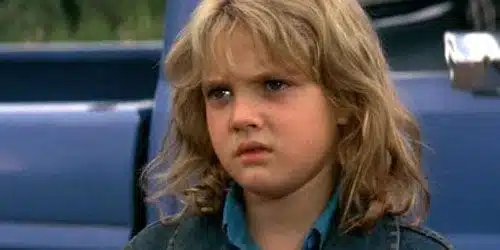
As a kid, Irreconcilable Differences was one of my favorite films. Watching it 15 years later I kind of wonder why. Perhaps it’s the concept: nine-year-old Casey (Drew Barrymore) takes her parents Albert (Ryan O’Neal) and Lucy (Shelly Long) to court to divorce them because she has become like “chattel” to them.
Most kids, even those of us with pretty good parents, could certainly identify with the premise. But the film is really the story about her parents, told through flashbacks as each of the characters tells his or her version in the courtroom.
As part of The Lost Collection (“the best movies you totally forgot about”), a set of eight films from the ‘80s, Irreconcilable Differences is worth remembering. It has its moments. When young Casey refuses to speak English to her self-absorbed parents, for instance. And the attempts to make the waif-like Shelly Long look fat are humorous. The moment when Albert wants his star to do a nude scene and the producer (Sam Wanamaker) remarks that nudity would take this PG film up to an R rating is ironic, and a bit startling, since Sharon Stone bares her breasts for this PG-rated film.
The story unfolds as Casey’s parents met on a rainy highway and fell in love. They wrote a script together, An American Romance, which he directed, that made them millions of dollars and accolades mostly for him. And they end up in a bitter divorce when he “falls in love” with the fresh young star of their second film, Blake Chandler (Sharon Stone).
We barely see Casey, and maybe this is part of the point. The love story, and subsequent divorce, are typical enough, as Casey reminds us, “most parents get divorced”, though the story is entertaining and compelling and O’Neal and Long offer believable, often touching, and sometimes humorous performances.
The story seems somewhat Hollywood indulgent as the couple—he a director/writer, and she a writer—gets caught up in the hype and ego of success at one moment and the sting of failure at others. Through the Trivia Track we learn facts like the Blake Chandler character was loosely based on Cybill Shepherd and Albert’s Gone With the Wind flop, the musical Atlanta, is a thinly veiled spoof of the flop, At Long Last Love, that Peter Bogdanovich made for Shepherd. And we also learn that the twin girl characters in The Parent Trap were named after the children of screenwriter/director Nancy Meyers and Charles Shyer.
The Trivia Track, a vastly disappointing sole DVD feature, is dominated by poorly posed multiple choice questions, true/false questions, and informative facts that are rarely informative. Periodically throughout the film a caption appears at the bottom of the screen. Sometimes this caption is a fact about one of the actors or one of the people, places, or events mentioned in passing.
While the Trivia Track includes a few interesting tidbits of trivia, like those above, or like the fact that Drew Barrymore has played a character named Casey in three different films (a multiple choice question), or the fact that she was the youngest host of Saturday Night Live at age seven (a statement), most of the trivia track is repetitive and focused on O’Neal, Long and the screenwriters.
Some of the “trivia” is downright inane. For instance, the “fact” that “the international film festival ‘Cannes’ takes place in France” or the completely irrelevant question about the New York Yankees previous team name. Other “trivia” is painfully obvious such as Shelly Long’s “most notable role” (Cheers, duh) and Drew Barrymore’s “breakout film” (E.T. double duh).
The question about which character currently own the rights to the original Charlie’s Angels television series is downright painful. Unfortunately there is no trivia about the character, Maria (Hortensia Colorado), or about California’s laws surrounding emancipation.
Some of the best elements of this film are the ending, the framing of the story, and the writing. For instance, we hear Casey’s plea to the judge that her parents are “just too screwed up” for anyone to be around and that she would rather live with Maria Hernandez, the long-time maid whom Casey spends most of her time with and who agrees to this arrangement, but we don’t hear the judge’s ruling. Instead, the last scene of the film finds Casey at Maria’s house as both parents show up at the same time for their visitation.
The film does not attempt to moralize about career-oriented, self-indulgent parents but, in the end, Casey’s parents become human again and Casey is no longer their “pet”. And, of course, there are hints that perhaps Albert and Lucy’s differences have been reconciled.
